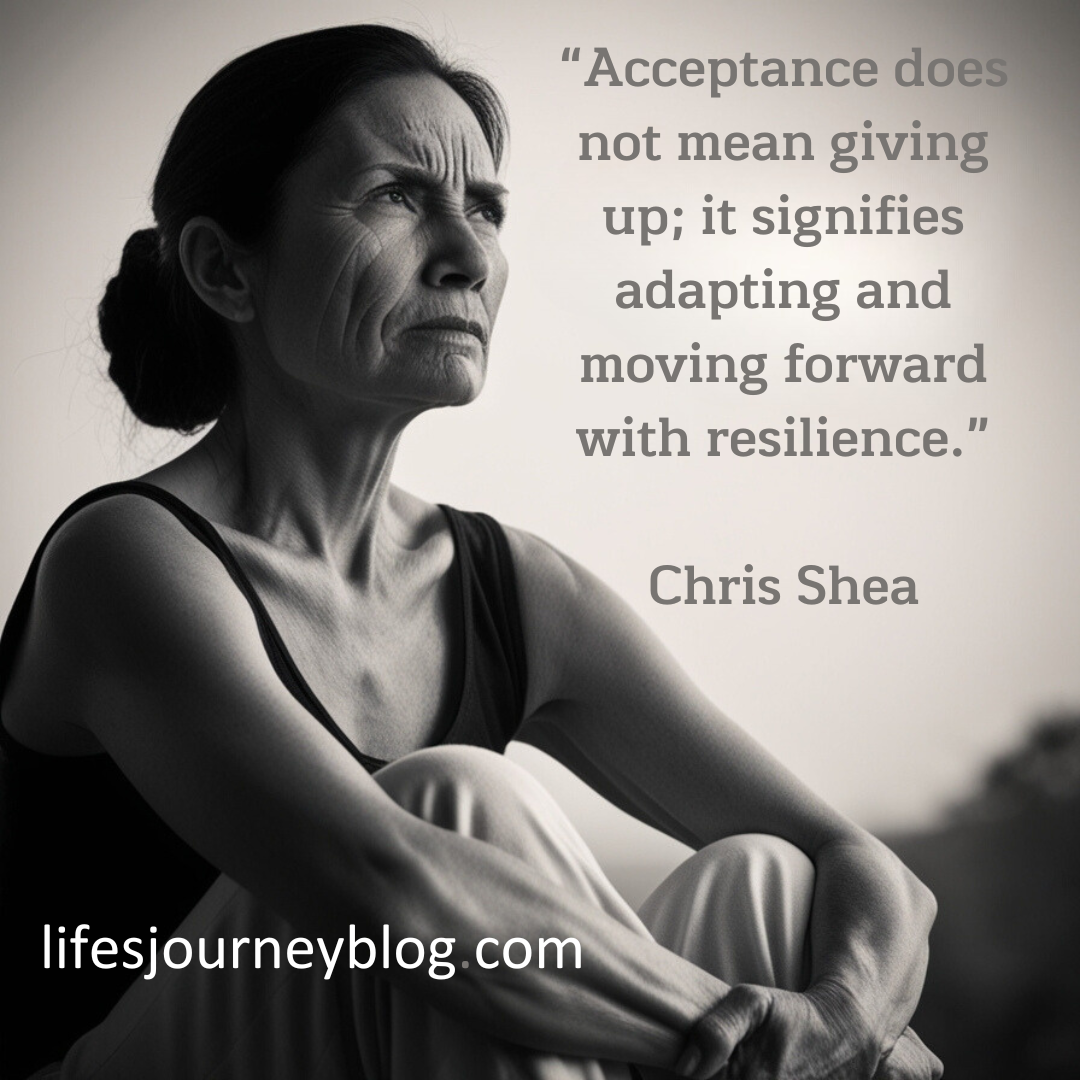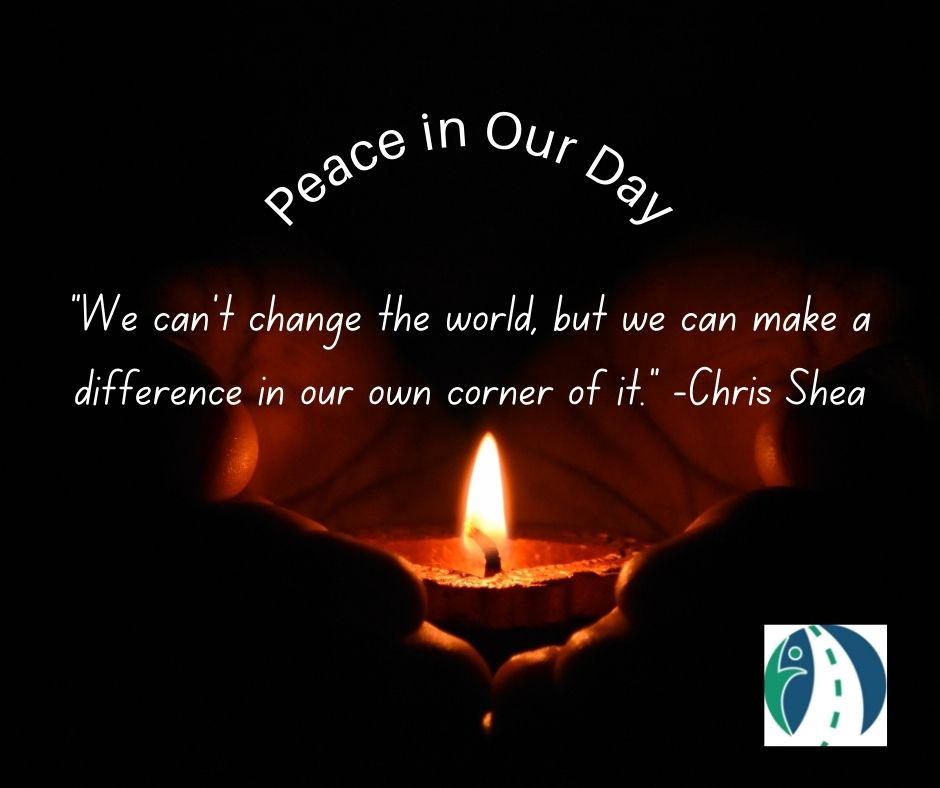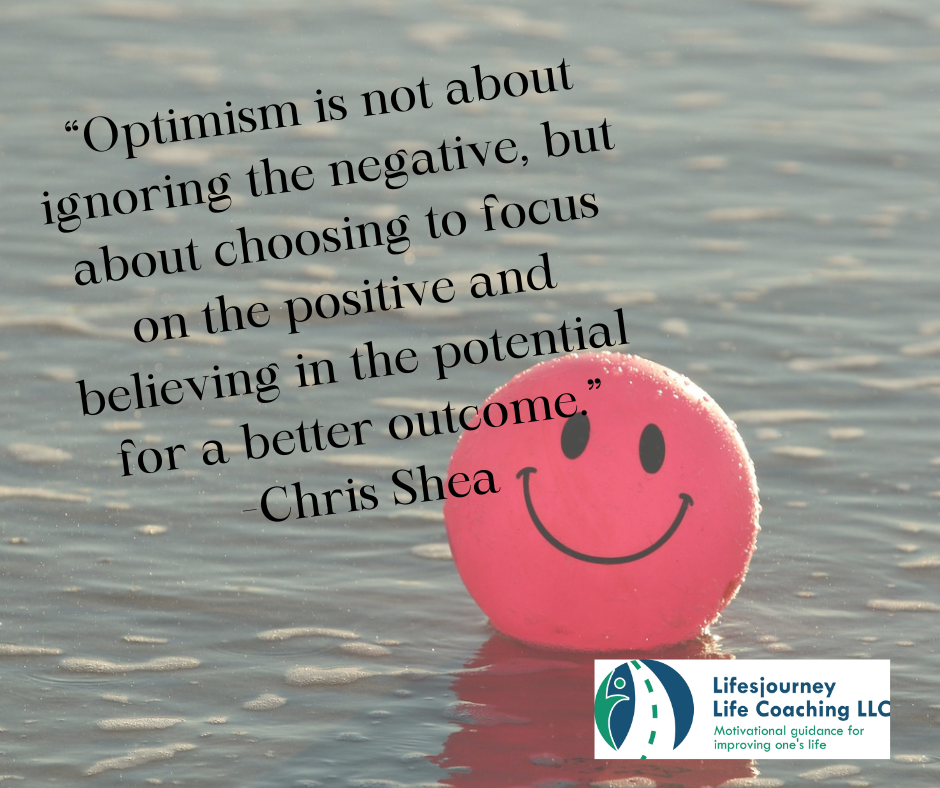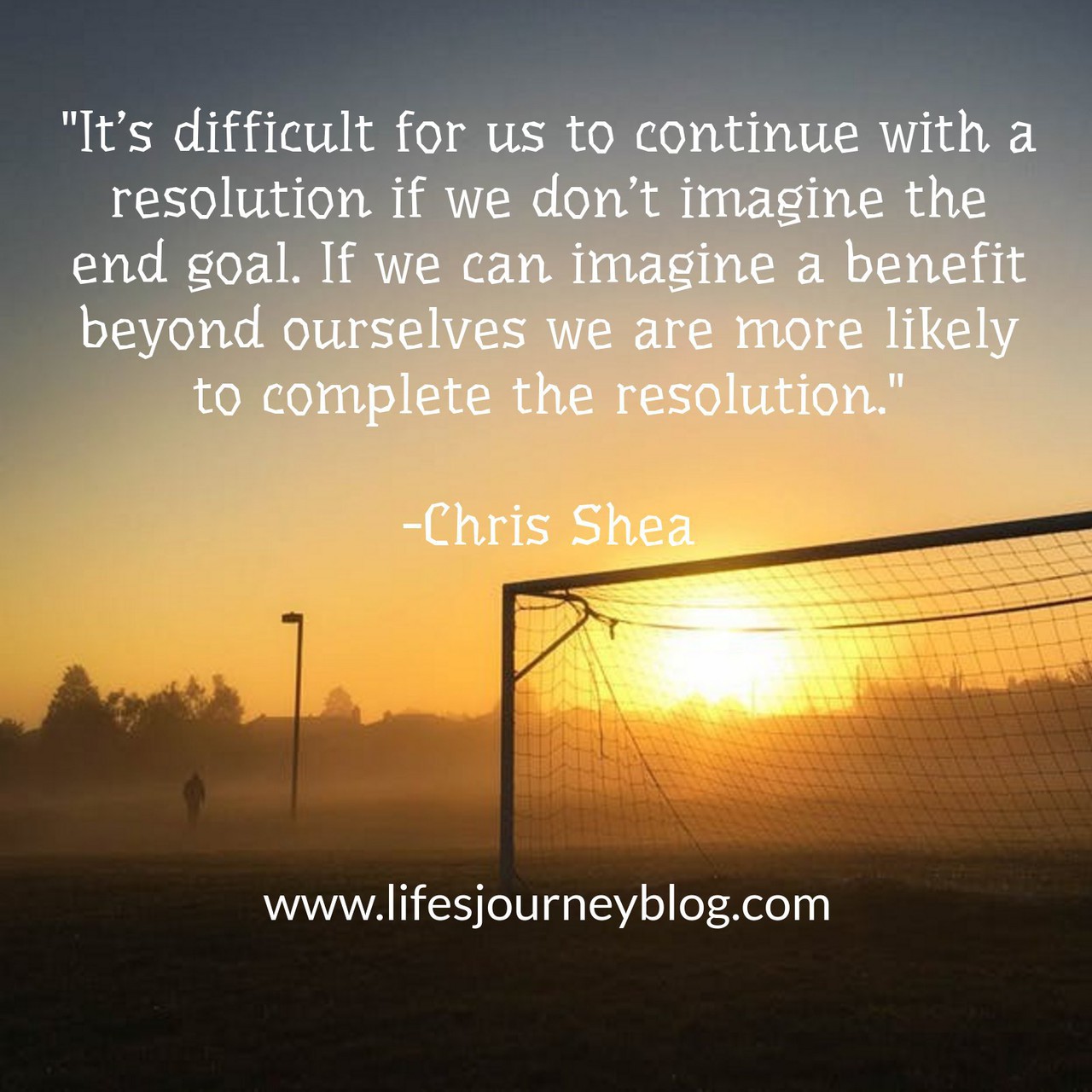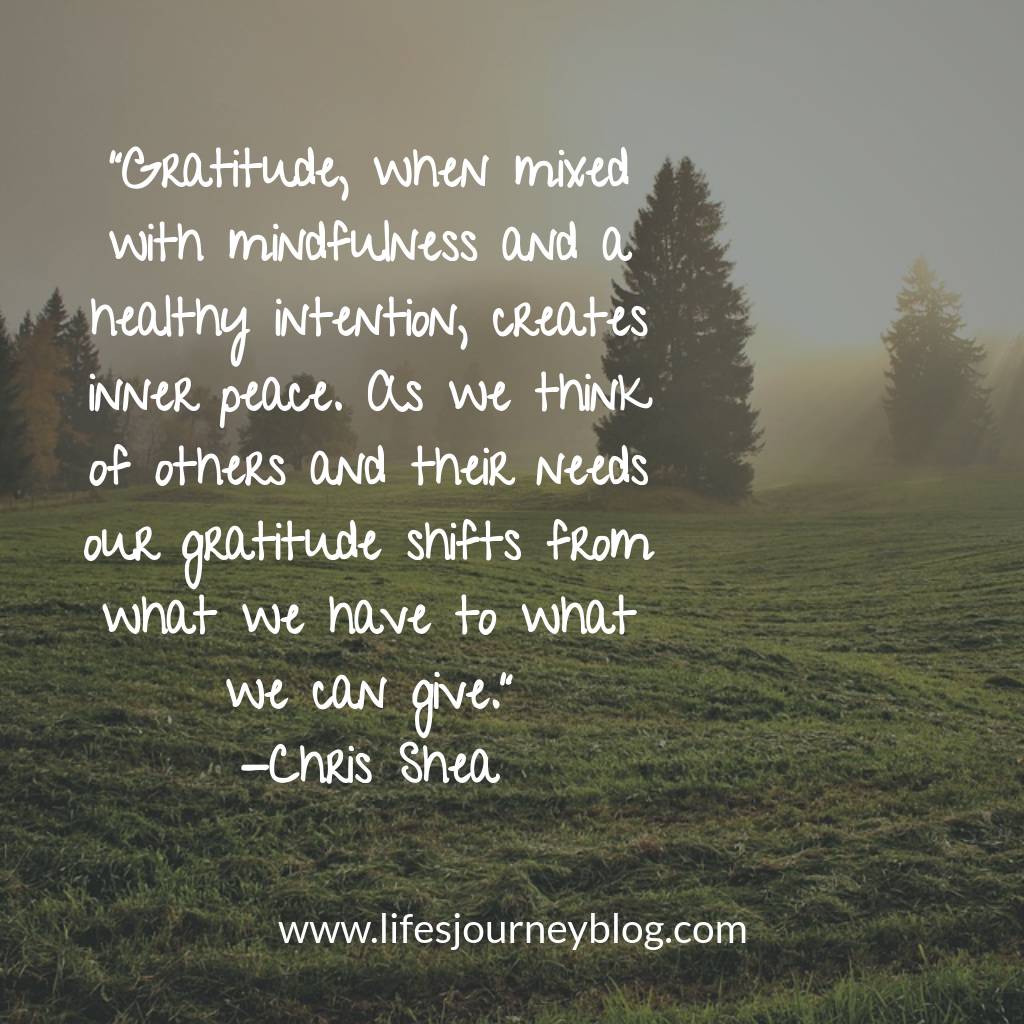Posts Tagged ‘mindfulness’
How to Practice Mindfulness for Anxiety: Calming the Fear of the Unknown

Image Source: AI Generated
Fear of the unknown grips us all at times, so how to practice mindfulness for anxiety is an essential tool. Your mind races ahead, creating scenarios that may never happen, while precious moments of peace slip away. You’re not alone in this experience – countless people share this same struggle with anxiety.
Let me share what years of guiding others through anxiety has taught me. Mindfulness stands as one of our most powerful allies against anxious thoughts. Picture mindfulness as your trusted companion, helping you find steady ground when uncertainty shakes your world.
This guide offers more than quick fixes or positive thinking mantras. Together, we’ll explore how to build a different relationship with uncertainty – one where you can acknowledge your fears while staying anchored in calmness. Drawing from both scientific research and real client experiences, I’ll show you practical ways to face anxiety with greater confidence and inner strength.
Understanding the Mind-Anxiety Connection
Your mind holds remarkable power over anxiety. Science tells us that 301 million people worldwide grapple with anxiety – each person’s experience unique yet connected by common threads of human experience.
How anxiety affects your thought patterns
Picture your brain as a skilled fortune teller, always trying to peek into tomorrow. This natural tendency serves us well, until anxiety takes hold. Your thoughts begin to spiral into what psychologists call “cognitive distortions” – mental stories that paint pictures of worst-case scenarios and potential threats.
The role of uncertainty in triggering anxiety
Uncertainty stands at the heart of anxiety’s power. Science reveals that your brain reads unknown situations as potential threats. Much like an overprotective guardian, it sounds the alarm when faced with unpredictable circumstances. This explains those sleepless nights before important events or that knot in your stomach during times of change.
Why mindfulness works for anxiety relief
Mindfulness offers more than temporary comfort – it provides lasting relief backed by scientific evidence. Studies confirm that mindfulness-based stress reduction matches the effectiveness of traditional anxiety medications. The magic lies in two simple yet powerful skills: watching your present experiences and accepting them with gentle awareness.
Your brain actually changes through mindfulness practice. Regular sessions quiet the amygdala – your brain’s anxiety alarm system – while building stronger emotional control centers. My clients often express amazement at how these simple practices create such profound changes in their daily lives.
This connection between mind and anxiety points to something beautiful – you already possess the tools needed for peace. Mindfulness simply helps you access and strengthen these natural abilities, even when life feels most uncertain.
Rewiring Your Response to Uncertainty
Your brain holds remarkable potential for positive change. Science calls this ability neuroplasticity – think of it as your mind’s power to create new paths through difficult terrain. Research confirms that steady mindfulness practice reshapes brain regions responsible for emotional balance and memory.
Breaking the cycle of anxious thinking
Picture anxiety as a carousel – you notice worrying symptoms, question your strength to cope, then shy away from challenging situations. Yet hope shines through this pattern. Small steps toward feared situations build your confidence muscles. Each time you face uncertainty with mindfulness tools, you create stronger emotional footing. My clients often discover their inner courage through this gentle approach.
Building tolerance for discomfort
Difficult emotions resemble waves – they rise, peak, and eventually pass. Your relationship with these feelings matters more than the feelings themselves. Think of distress tolerance as emotional muscle memory – the more you practice sitting with discomfort, the stronger your ability grows to weather emotional storms without becoming overwhelmed.
Creating new neural pathways through mindfulness
Science reveals beautiful changes in your brain through mindfulness practice. Regular sessions strengthen connections in your right hippocampus, your emotional command center. My clients’ experiences mirror these findings – consistent practice builds reliable pathways toward peace. These changes run deeper than momentary relief – they represent fundamental shifts in how your brain processes fear and uncertainty.
Developing Present Moment Awareness
Picture your mind as a time-traveling explorer, constantly jumping between past regrets and future fears. Yet peace lives in the present moment. My clients discover that true presence melts away layers of anxiety and old hurts.
Shifting focus from future worries to now
Worry tricks us into missing the life unfolding right now. Try greeting your anxious thoughts like old acquaintances: “Hello there, worried mind”. Science confirms this simple truth – people feel happier when fully present, regardless of their activity.
Recognizing thought patterns without judgment
Your thoughts flow like a river – constant yet ever-changing. Let me share proven mindfulness techniques that help my clients find steadier ground:
- Feel your breath and body sensations
- Watch thoughts drift like passing clouds
- Observe your mind without fixing anything
- Guide attention back with gentle patience
Cultivating acceptance of uncertainty
Life opens beautiful doors when you welcome uncertainty. Rather than asking “Why me?”, explore “What possibilities exist?”. My clients discover a wonderful mental flexibility through this approach – their minds learn to bend rather than break under pressure.
These simple practices create what mindfulness pioneer Jon Kabat-Zinn calls “living your full life”. Each moment of presence offers a choice beyond fight or flight – an invitation to genuine contentment and inner peace.
Building a Sustainable Mindfulness Practice
Picture mindfulness as a garden – it flourishes with gentle, consistent care. My years of guiding others reveal that lasting success blooms when mindfulness feels natural, like breathing, rather than another checkbox on your daily list.
Creating a personalized mindfulness routine
Start small – simple practices woven into everyday moments work best. Morning light often provides perfect moments for practice, before life’s demands begin calling. Your commitment grows stronger roots over time – research shows that six months of steady practice helps these skills become second nature.
Overcoming common practice obstacles
Doubt, restlessness, and sleepiness visit every mindfulness journey. Take heart – studies confirm that mindfulness-based stress reduction matches anxiety medications in effectiveness. Each challenge offers seeds of growth. When sleepiness clouds your practice, try sitting taller or choosing different practice times.
Measuring your progress and adjusting
True progress shows in life’s small moments – a calmer response here, a clearer mind there. Science supports these subtle shifts, showing improvements across mind, body, and emotional well-being. Keep a simple journal of your journey, noting changes in your daily life and relationships. Remember this encouraging truth – just 13 minutes of daily practice over 6-8 weeks can create meaningful change.
Conclusion
Your journey with mindfulness opens doorways to peace, even when uncertainty feels overwhelming. Science and experience unite in showing us something remarkable – your brain actually rewires itself through mindfulness practice, building natural defenses against anxiety’s pull.
Think of mindfulness as learning a new language – the language of peace with uncertainty. Each practice session strengthens your ability to stay steady amid life’s storms. My clients often share how this simple practice brings unexpected gifts – moments of joy and clarity where worry once lived.
Your mindfulness journey deserves patience and gentle care. Small steps lead to lasting change. Many people find their path grows stronger when combining personal practice with professional support. My door stands open if you seek guidance along this path toward inner peace.
Mindfulness holds special beauty in its simplicity. Whether anxiety whispers or shouts in your life, these practices offer steady ground beneath your feet. Remember this truth – peace doesn’t come from controlling tomorrow’s uncertainties. It blooms naturally when you embrace this present moment, exactly as it is.
10 Mindful Resilience Practices to Boost Your Emotional Strength

Image Source: AI Generated
Developing mindful resilience can greatly improve your mental well-being and ability to cope with stress.
In today’s fast-paced world, filled with tragedy and disasters, we often find ourselves facing challenges that test our emotional strength. Mindful resilience has emerged as a powerful tool to help us navigate these difficulties with grace and composure. By combining mindfulness practices with resilience-building techniques, we can enhance our ability to bounce back from setbacks and maintain our emotional well-being.
In this article we’ll explore a range of mindfulness coping strategies that can boost your emotional strength and help you develop a more resilient mindset. From mindful acceptance to mindfulness training, we’ll cover practical approaches to cultivate emotional intelligence and establish a mindful morning routine. These mindfulness practices are designed to equip you with the tools you need to face life’s ups and downs with greater ease and confidence. I mention these particular tools as these are the tools I use in my life and with my clients.
Practice Mindful Acceptance
Mindful acceptance is a powerful tool to boost our emotional strength and resilience. It involves embracing our experiences, thoughts, and emotions without judgment or resistance. By practicing mindful acceptance, we can develop a more compassionate relationship with ourselves and our surroundings.
Developing non-judgmental awareness
To cultivate non-judgmental awareness, we need to observe our thoughts and feelings without labeling them as good or bad. This practice allows us to step back from our automatic reactions and gain a clearer perspective. One effective technique is to focus on our breath, using it as an anchor to bring our attention to the present moment. As we breathe, we can notice any thoughts or sensations that arise without getting caught up in them.
Embracing imperfections
Accepting our imperfections is a crucial aspect of mindful resilience. The Japanese philosophy of Wabi-sabi teaches us to appreciate the beauty in imperfection, impermanence, and incompleteness. By acknowledging that we all have limitations and unfinished business in our lives, we can let go of the need for perfection and find peace with ourselves as we are.
Letting go of resistance
Resistance often intensifies our struggles and prolongs our suffering. As the saying goes, “What you resist persists.” By letting go of resistance, we can create space for acceptance and growth. This doesn’t mean we become passive or resigned; rather, we learn to respond to challenges with openness and flexibility. When we face difficulties, we can practice turning towards them with curiosity and compassion, allowing ourselves to experience emotions fully without getting stuck in them.
Utilize Mindfulness-Based Stress Reduction
Mindfulness-Based Stress Reduction (MBSR) is a powerful tool to enhance our mindful resilience and boost emotional strength. Developed by Dr. Jon Kabat-Zinn, this program combines mindfulness meditation, yoga, and mind-body awareness to reduce stress and promote a sense of calm and balance.
Overview of MBSR program
The MBSR program typically runs for eight weeks, with weekly group sessions lasting about 2.5 hours each. Participants learn various mindfulness practices, including meditation, body scans, and gentle yoga movements. The program also includes a day-long silent retreat, usually during the sixth week, to deepen the practice. Daily home assignments, often lasting around 45 minutes, are an essential part of the program, helping participants integrate mindfulness into their daily lives.
Key mindfulness techniques
MBSR incorporates several key mindfulness techniques to cultivate awareness and reduce stress. These include:
-
Breathing exercises: Participants learn diaphragmatic breathing, also known as belly breathing, to slow their heartbeat and lower blood pressure.
-
Body scan meditation: This practice involves focusing attention on different parts of the body, promoting relaxation and body awareness.
-
Sitting meditation: Participants observe their thoughts and feelings without judgment, gently bringing their attention back to their breath when the mind wanders.
-
Mindful movement: Gentle yoga exercises help relax both the body and mind.
Applying MBSR in daily life
Integrating MBSR techniques into daily life is crucial for developing mindful resilience. Participants are encouraged to practice mindfulness during routine activities, such as eating, walking, or doing household chores. By focusing on the present moment and using their senses, individuals can ground themselves, reduce anxiety, and promote relaxation. Regular practice of these mindfulness coping strategies can lead to improved emotional well-being and enhanced ability to manage stress in various aspects of life.
Cultivate Emotional Intelligence
Cultivating emotional intelligence is a crucial aspect of developing mindful resilience. By enhancing our ability to recognize, understand, and manage our emotions, we can better navigate life’s challenges and maintain our emotional well-being.
Recognizing and labeling emotions
One of the first steps to cultivate emotional intelligence is to recognize and label our emotions accurately. This practice, known as affect labeling, has been shown to reduce stress and increase feelings of ease during challenging situations. By identifying and naming our emotions, we can lessen their control over us and switch from reaction mode to a more thoughtful response mode.
To improve our ability to recognize emotions, we can perform regular emotional check-ups. This involves taking a moment to pause and reflect on how we’re feeling, labeling the emotion in one or two words, and considering why we might be experiencing that particular feeling.
Understanding emotional triggers
Understanding our emotional triggers is essential for developing mindful resilience. Triggers are unique to each individual and can be linked to past experiences, fears, or stressful situations. By identifying our personal triggers, we can better anticipate and prepare for potential emotional reactions.
Keeping a journal can be a valuable tool in this process, allowing us to note when strong emotional responses occur and what might have triggered them. With practice, we can become more aware of our triggers and develop strategies to manage them effectively.
Responding vs. reacting to emotions
Learning to respond rather than react to our emotions is a key component of emotional intelligence. Reactions tend to be immediate and instinctive, while responses are more reasoned and thoughtful. By creating space between an event and our reaction, we give ourselves time to process our emotions and make more mindful decisions.
Develop a Mindful Morning Routine
Creating a calm start to each day can significantly boost our mindful resilience and set a positive tone for the hours ahead. By incorporating mindfulness practices into our morning routine, we can cultivate emotional well-being and strengthen our ability to cope with daily challenges.
Setting intentions for the day
One powerful way to begin our day mindfully is by setting intentions. This practice involves taking a moment to reflect on what we want to achieve or how we want to feel throughout the day. By asking ourselves questions like “What kind of person do I want to be today?” or “What attitude do I want to have towards others?” we can align our actions with our values and goals. This simple act of intention-setting can help us stay focused and committed to our personal growth.
Mindful stretching and movement
Incorporating gentle movement into our morning routine can wake up our body and mind, preparing us for the day ahead. Mindful stretching or yoga poses can help calm and clear our mind, reduce stress, and improve flexibility. Even just a few minutes of mindful movement can increase our focus and energy levels. We can start with simple stretches like seated side stretches or table poses, focusing on our breath and body sensations as we move.
Creating a calm start to each day
To establish a peaceful morning routine, it’s essential to avoid rushing and create space for self-care. This might involve waking up a bit earlier to allow time for mindfulness practices. We can begin by taking a few deep breaths upon waking, setting a gentle alarm, or keeping a gratitude journal by our bedside. By prioritizing these mindful moments, we can cultivate a sense of calm and presence that carries us through the day.
Conclusion
Embracing mindful resilience practices has a profound influence on our emotional strength and overall well-being. By incorporating techniques like mindful acceptance, MBSR, emotional intelligence cultivation, and a mindful morning routine, we equip ourselves to handle life’s ups and downs with greater ease. These practices offer us the tools to navigate challenges, reduce stress, and foster a more balanced and compassionate relationship with ourselves and our surroundings.
As we continue on our journey to emotional strength, it’s crucial to remember that developing mindful resilience is an ongoing process. Regular practice and patience are key to reaping the full benefits of these techniques.
To deepen your understanding and receive personalized guidance, consider reaching out to the Lifesjourney coaches to make an appointment. By committing to these practices, we open ourselves up to a more resilient, mindful, and emotionally balanced way of living, allowing us to face life’s challenges with grace and inner strength.
Finding Peace Amidst Chronic Pain: A Personal Journey of Acceptance and Resilience
Editor’s Note: This article outlines the author’s personal experience with chronic pain, a condition affecting millions globally. The author emphasizes that accepting the reality of chronic pain is the first step towards finding peace. This process mirrors the stages of grief and requires redefining self-image and adjusting expectations. The journey to finding peace with chronic pain is personal, ongoing, and demands patience. It involves developing a spiritual practice while setting realistic goals. Check out the author’s previous article “How I Cope With Chronic Pain Management Using Mindfulness” from 2019.
Introduction
Living with chronic pain is a challenging journey that affects millions of people worldwide. It’s a persistent companion that can overshadow daily life, making even the simplest tasks seem insurmountable. I empathize since I too cope with chronic pain on a daily basis. Over the years, as my pain has increased, so too has my need to cope with it. The pain will get worse; there is no cure. Therefore, the options are to cope with the chronic pain, or give in to it. I refuse to quit!
In this article, I share the techniques that work for me. We’re each different, so don’t read this article thinking I’ve covered all the ways of finding peace in chronic pain. There are many solutions.
However, I’ve learned that despite the constant discomfort, finding peace is not only possible but crucial for maintaining a fulfilling life.
Understanding Chronic Pain
Chronic pain is defined as pain that persists for more than three months, often outlasting the usual healing process. It can manifest in various forms:
- Neuropathic pain (nerve pain)
- Nociceptive pain (tissue damage)
- Idiopathic pain (unknown cause)
Common causes include:
- Arthritis
- Fibromyalgia
- Back injuries
- Migraines
The impact of chronic pain extends beyond physical discomfort, affecting emotional well-being, relationships, and overall quality of life. It’s a condition that demands a holistic approach to management and acceptance.
Accepting Your New Reality
Finding peace with chronic pain begins with acceptance. This process often mirrors the stages of grief:
- Denial
- Anger
- Bargaining
- Depression
- Acceptance
Embracing change is crucial. It involves redefining your self-image and adjusting expectations. Remember, accepting your condition doesn’t mean giving up; it means adapting and moving forward with resilience.
Practical Strategies for Pain Management
Managing chronic pain effectively often requires a multifaceted approach:
Medical Treatments
- Prescription medications
- Physical therapy
- Nerve blocks
Alternative Therapies
- Acupuncture
- Massage therapy
- Yoga
Lifestyle Modifications
Understanding and implementing ergonomic adjustments in the workplace is of paramount importance because of multiple reasons. Ergonomics is about improving workspaces so that workers can be more efficient and comfortable. Adjusting the workplace ergonomically can help employees by reducing physical stress, preventing musculoskeletal disorders. Adjusting your ergonomics at home can help to reduce your chronic pain. Consult with a medical professional to learn what furniture and tools are available for proper home ergonomics.
In the realm of health and wellness, the power of dietary modifications is often underestimated. Modifying what you eat can play a big role in managing chronic pain. The food we consume can either exacerbate or alleviate inflammation, a key component of chronic pain. Understanding the link between diet and pain allows us to select foods that can decrease inflammation and potentially alleviate chronic pain.
While the effect of diet on chronic pain varies, modifying your diet can be crucial in managing this ongoing condition. Hence, it is essential for individuals dealing with chronic pain to consider their dietary habits as part of a comprehensive pain management strategy.
Regular, light physical activity plays a pivotal role in managing and alleviating chronic pain. Engaging in consistent exercise helps strengthen muscles, improve flexibility, and enhance overall body resilience. It also aids in reducing inflammation and promoting better blood circulation, which can significantly lessen pain experiences.
In the context of chronic conditions, it’s essential to approach exercise cautiously and progressively, ensuring that the intensity matches individual health levels. Engaging in regular light exercise can effectively alleviate chronic pain, enhance quality of life, and promote better health.
Nurturing Mental Well-being
Mental health is paramount in finding peace amidst chronic pain. Consider these strategies:
- Mindfulness and meditation: Practice being present in the moment, acknowledging pain without judgment.
- Cognitive Behavioral Therapy (CBT): Learn to identify and change negative thought patterns.
- Building a support network: Surround yourself with understanding friends, family, and professionals.
Finding Joy in Small Moments
Cultivating happiness despite pain is an essential skill:
- Gratitude practices: Keep a daily journal of things you’re thankful for.
- Engaging in hobbies: Pursue activities that bring you joy, adapting them as necessary.
- Celebrating small victories: Acknowledge and appreciate even minor accomplishments.
Connecting with Others
Isolation can exacerbate the challenges of chronic pain. Combat this by:
- Joining support groups
- Participating in online communities
- Educating loved ones about your condition to foster understanding
Cultivating Inner Peace
Finding peace is an ongoing process that requires intentional effort:
Developing a Spiritual Practice
This doesn’t necessarily mean religion; it could be any practice that connects you to something greater than yourself.
Setting Realistic Goals
Break larger objectives into smaller, achievable steps to maintain motivation and a sense of progress.
Practicing Self-Compassion
Be kind to yourself. Recognize that you’re doing the best you can in challenging circumstances.
Conclusion
Living with chronic pain is undoubtedly difficult, but finding peace within this reality is possible. By using the strategies we talked about, you can create a meaningful and joyful life, even if you’re dealing with ongoing discomfort.
Remember, the journey to peace is personal and ongoing. Be patient with yourself, celebrate your progress, and never hesitate to reach out for support when needed. Your path to finding peace amidst chronic pain is a testament to your strength and resilience.
If you want to know how you can cope with your chronic pain, make an appointment with Chris. Check out his page for all the contact information.
Finding Joy in the Present Moment
Finding joy in the present moment is a profound and transformative practice that can greatly enhance our overall well-being and happiness. You may not believe this is possible, and I understand that. I too, many years ago, was skeptical until I daily put this practice into my life. In a fast-paced and constantly evolving world, where distractions abound and concerns about the future and past regrets can consume our thoughts, the idea of living in the present moment may appear challenging to grasp. However, it is a valuable skill that deserves our attention and effort to develop. By focusing on the here and now, we can find a sense of peace and fulfillment amidst the chaos of everyday life.
How do I live in the moment? To truly live in the moment, one must cultivate a heightened awareness of your present experiences, thoughts, and surroundings. This involves consciously shifting attention away from worries about the future or regrets about the past, and instead focusing on the here and now. It requires a deliberate effort to engage fully with one’s current activities, whether it’s savoring a meal, listening attentively to a friend, or simply observing the sensations of breathing. By doing so, you can reduce stress, increase your appreciation for life’s simple pleasures, and develop a deeper connection with yourself and others.
Living in the moment doesn’t mean ignoring responsibilities or planning for the future; rather, it’s about finding a balance and bringing a sense of presence and engagement to all aspects of life. With practice, one can learn to quiet the constant chatter of the mind and experience a greater sense of peace, clarity, and fulfillment in your daily experiences.
Let Go of The Past & Worries of The Future
The first step towards finding joy in the present is fully engaging with the here and now. This means letting go of regrets, worries, and preoccupations about what has already happened or might happen in the future and immersing ourselves in the beauty and simplicity of the present moment. This takes practice, patience, and time to accomplish. Trust me, this does work, but you need to put energy into this practice. By doing so, we can discover a profound sense of contentment and fulfillment that often eludes us when we are preoccupied with the past or future.
Practice Mindfulness
Practicing mindfulness is one of the keys to finding joy in the present moment. Mindfulness involves paying deliberate attention to the present moment without judgment. Observing our thoughts, sensations, and surroundings with curiosity and acceptance can cultivate a deep sense of presence. This presence allows us to savor the small pleasures of life, connect more authentically with others, and find joy in the simplest of activities.
As a life and business coach focused on guiding people toward inner peace, this topic of mindfulness is particularly relevant and important. Let me share a brief history of how mindfulness has evolved over time.
- Ancient Roots (500 BCE – 500 CE):
-
- Mindfulness has its origins in ancient Eastern spiritual traditions, particularly Buddhism.
- The concept of “sati” (mindfulness) was a key component of the Buddha’s teachings.
- Early Buddhist texts like the Satipatthana Sutta outlined mindfulness meditation practices.
- Eastern Spread (500 CE – 1800s):
-
- Mindfulness practices spread throughout Asia, evolving within various Buddhist traditions.
- Different schools of Buddhism (Zen, Theravada, Tibetan) developed their own mindfulness techniques.
- Western Introduction (Late 1800s – 1970s):
-
- Eastern philosophy and meditation practices began to gain interest in the West.
- Influential figures like D.T. Suzuki and Alan Watts introduced Zen concepts to Western audiences.
- The 1960s counterculture movement sparked wider interest in Eastern spirituality and meditation.
- Secular Adaptation (1970s – 1990s):
-
- Jon Kabat-Zinn developed Mindfulness-Based Stress Reduction (MBSR) in 1979.
- MBSR marked a significant shift, presenting mindfulness in a secular, scientific context.
- Research on mindfulness and its benefits began to grow in academic and medical communities.
- Mainstream Acceptance (1990s – Present):
-
- Mindfulness gained popularity in psychology, with the development of Mindfulness-Based Cognitive Therapy (MBCT).
- Corporations, schools, and healthcare institutions began incorporating mindfulness programs.
- Technological advancements led to the creation of mindfulness apps and online resources.
- Scientific Validation (2000s – Present):
-
- Neuroscience research has provided evidence for the benefits of mindfulness on brain structure and function.
- Studies have shown positive effects on stress reduction, emotional regulation, and overall well-being.
- Mindfulness has been integrated into various therapeutic approaches and wellness programs.
- Ongoing research continues to explore new applications and benefits of mindfulness practices.
This brief history showcases how mindfulness has evolved from ancient spiritual practices to a widely accepted and scientifically supported approach to well-being. In my personal life and as a life and business coach, I find that incorporating mindfulness techniques can be incredibly beneficial for clients seeking to enhance their personal and professional lives.
Remove Distractions
In today’s fast-paced world, we are constantly bombarded with notifications, tasks, and stimuli that distract us from the here and now. These distractions can create a sense of restlessness and prevent us from fully immersing ourselves in the present moment.
Distractions often lead to fragmented attention, making it difficult to fully engage in what we are doing. By intentionally eliminating distractions, such as turning off notifications on our devices or finding a quiet space, we can focus more intensely on the task or experience. This heightened focus allows us to appreciate the details and nuances of the present moment, leading to a deeper sense of joy and satisfaction.
Savor Moments of Beauty
Try to notice and savor moments of beauty in your daily life. Whether it’s a breathtaking sunset, a blooming flower, or a heartwarming smile from a loved one, taking the time to appreciate these moments can bring a sense of wonder and joy. Try to be fully present and engage your senses in these experiences to amplify their impact on your well-being.
Conclusion
Finding joy in the present moment is possible by practicing mindfulness. Mindfulness contributes positively to stress reduction, emotional control, and overall wellness. It’s incorporated into numerous therapeutic methods and wellness programs. Current research is investigating new uses and advantages of mindfulness practices. Eliminating distractions enables us to completely immerse ourselves in the present and appreciate finer details. Relishing beautiful moments induces feelings of awe and happiness. By adopting these strategies, finding joy in the present moment is possible, improving our capacity to experience joy in the present and foster a more satisfying life.
Let Lifesjourney guide you in strategies for your personal joy and happiness. Check out our coaching page, or call us: (240) 587-7854.
Self-Care Why Do We Struggle With It?
I often speak and write about the significance of self-care in maintaining our overall well-being and achieving success in various aspects of life. However, despite this awareness, many of us don’t find the additional time to prioritize self-care, so it remains a challenging task. Keep reading to find out why self-care is a struggle and how to work it into your routine.
Feeling Shame
Many people struggle to prioritize self-care in their lives due to a fundamental belief that they are not deserving of it. This lack of self-worth stems from a poor self-image, where individuals fail to recognize their own value and importance. Shame itself is too large a topic for us to fully explore in this article.
However, it is crucial to understand that everyone deserves self-care, regardless of their circumstances or perceived shortcomings. By actively working on improving your self-image and reminding yourself of your inherent worth, you can overcome this barrier and find it easier to carve out time for self-care amidst the demands of a busy life. Remember, self-care is not a luxury, but a necessity for overall well-being and happiness.
You Don’t Make the Effort
It can be difficult for some people to prioritize self-care due to negative self-image or poor time management. If you’re in this situation, it’s important to address these aspects. You might find it is easier to engage in self-care by putting it directly into your schedule.
You Don’t Know What Self-Care is
These days, people say “treat yourself,” but it’s crucial to understand that it’s not the same as self-care. You should only treat yourself after a specific activity, not all the time. Take “treating yourself” as having a snack or staying up late on Saturday night, and “self-care” as making sure you eat healthy and get enough sleep every day.
You Are Tired
People have a hard time with self-care because they’re just so tired. Without adequate self-care, this problem will perpetuate, causing you to feel progressively more fatigued. If this is difficult for you, focus on self-care and rest, so you’ll be ready for future sessions without feeling tired.
Bottom line, there are many reasons why you might be struggling with self-care. It’s important to understand why you’re having trouble with self-care so you can find a solution. Without self-care, you will continue to be tired and stressed.
What can we do to overcome these struggles to live a balanced life which includes self-care?
Actionable Steps
- Incorporate Regular Physical Activity:Aim for at least 20-30 minutes of moderate exercise, such as walking, jogging, or yoga, each day. By being physically active on a regular basis, you can boost your energy, uplift your mood, and decrease stress, which can prevent feelings of tiredness and low energy. Even a short walk can invigorate your body and mind, making it easier to tackle daily tasks with enthusiasm.
- Prioritize Quality Sleep:Establish a consistent sleep routine by going to bed and waking up at the same time every day, aiming for 7-9 hours of sleep per night.Quality sleep is crucial for mental and physical rejuvenation. A regular sleep schedule helps regulate your body’s internal clock, ensuring you wake up feeling refreshed and ready to face the day with vigor.
- Eat Balanced, Nutrient-Rich Meals:Focus on consuming a balanced diet rich in unprocessed foods, including fruits, vegetables, lean proteins, and whole grains, while avoiding excessive sugar and refined carbs.A nutrient-dense diet provides sustained energy and prevents the sluggishness associated with poor nutrition. By fueling your body with the right foods, you enhance your overall well-being and maintain steady energy levels throughout the day.
Integrate these steps into your daily routine to improve your energy, motivation, and well-being. Remember, small, consistent changes can lead to substantial improvements in your daily life.
If you’re ready to work on your self-care please call the office: 240-587-7854 or email us: booking@lifesjourneyblog.com and we’ll guide you to a healing self-care.
Your Inner Peace Path: Essential Practices for a Calmer Mind

Inner peace, a state of serenity and calm, can be achieved through practices such as mindfulness meditation and loving-kindness meditation, which focus the mind on the present and foster feelings of love and kindness towards oneself and others. Regular physical activity, including yoga or tai chi, not only enhances mood but also contributes significantly to this tranquil state by reducing stress and increasing self-awareness.
On the journey towards achieving inner peace, one must also consider the importance of a regular sleep schedule, the nurturing of strong social connections, and the practice of gratitude, all of which play a crucial role in cultivating happiness and a sense of calm. Engaging in activities that bring joy, alongside effective time management and seeking professional help when necessary, are essential steps in navigating the path to inner peace.
Understanding Inner Peace
The Nature and Importance of Inner Peace
Inner peace is fundamentally a state where emotional and mental serenity prevails, free from disturbing thoughts, allowing individuals to control their moods and reactions effectively. It transcends mere passivity or indifference; it is an active state of profound presence and engagement with life’s challenges. This state is not exclusive to those dedicated to spiritual or religious practices; it is accessible to anyone, regardless of their lifestyle or occupation.
Misconceptions and Realities
There is a common misconception that inner peace involves disengagement from the world and ignoring personal or external issues. Contrarily, true inner peace involves a deep engagement with the world, maintaining a balance that fosters internal harmony and stability. It is about embracing life’s experiences, acknowledging and addressing suffering, not through indifference but through a mindful and balanced approach.
Inner Peace as a Tool for Life
Achieving inner peace allows individuals to cope with any event or situation, aiding in managing anxieties and fears healthily. It enhances focus, patience, tolerance, and the quality of sleep, and it significantly improves relationships and overall happiness. Techniques such as Transcendental Meditation, mindfulness, and other forms of mental and physical training like yoga and tai chi have been shown to foster this peace.
Benefits Beyond Calm
The pursuit of inner peace offers extensive benefits; it improves physical and mental health, increases emotional intelligence, and enhances one’s ability to enjoy life and maintain energy. It equips individuals with the tools to handle stress healthily and appreciate the present moment, fostering a sense of contentment and well-being that transcends ordinary happiness and situational joys.
Strategies for Achieving Inner Peace
Daily Practices for Cultivating Inner Peace
Mindfulness and Meditation Techniques
- Begin with a daily meditation routine, setting aside 10-20 minutes to focus on your breath or a specific mantra.
- Incorporate mindfulness throughout your day by engaging in activities like mindful eating, walking, or journaling to enhance present-moment awareness.
- Explore various forms of meditation such as guided, mantra, or loving-kindness to find what best suits your needs.
- Practice body scan meditation to release tension and notice bodily sensations from head to toe.
Physical and Mental Health
- Engage in at least 30 minutes of moderate physical activity most days, choosing enjoyable activities like yoga or cycling.
- Ensure a healthy diet rich in fruits, vegetables, whole grains, and lean proteins while limiting processed foods and sugar.
- Aim for 7-9 hours of sleep per night and try to maintain a consistent sleep schedule.
- Regular practice of the 4-7-8 breathing technique can help manage stress and induce relaxation.
Social and Emotional Well-being
- Spend quality time with friends and family or connect with community groups that share your interests.
- Practice gratitude daily by reflecting on what you are thankful for or maintaining a gratitude journal.
- Engage in self-compassion by treating yourself with kindness and understanding, especially during challenging times.
- Commit to regular self-reflection to gain deeper insights into your thoughts, feelings, and behaviors.
Environmental and Lifestyle Adjustments
- Reduce exposure to stressors by setting boundaries with stressful relationships and limiting social media use.
- Surround yourself with nature and elements like plants and water sounds to create a calming environment.
- Participate in creative activities to keep your mind engaged and express your artistic side.
- Practice random acts of kindness to cultivate happiness and a deeper sense of community.
These strategies, when consistently applied, can help individuals navigate their journey towards inner peace, enhancing overall well-being and happiness.
Overcoming Obstacles to Inner Peace
Internal Challenges
1. Emotional and Mental Barriers
Unresolved inner emotions such as anger, jealousy, and high self-created pressure can significantly obstruct the path to inner peace. These emotions often stem from past experiences or unrealistic expectations we set for ourselves and others. Addressing these feelings through professional help or mindfulness practices can lead to better emotional management and inner calm.
2. Psychological Factors
The need for others’ approval, fears about the future, and perfectionist tendencies are common internal factors that disrupt inner peace. These issues can lead to a constant state of dissatisfaction and anxiety, making it difficult to achieve a serene mindset.
External Challenges
1. Societal Pressures
External factors such as a fixed mindset or rigid opinions can also pose significant barriers to achieving inner peace. These often manifest as a resistance to new ideas or an inability to adapt to change, which can create internal conflict and stress.
2. Overcoming Mindfulness Challenges
To effectively overcome challenges related to mindfulness, it is crucial to start with shorter meditation sessions and gradually increase their duration. Patience, practice, and adapting techniques to fit personal needs help in building a sustainable practice. Gently redirecting attention during meditation and exploring any resistance to mindfulness can also enhance the practice.
Strategies to Overcome Obstacles
1. Non-Attachment and Reduction of Over-Caring
Practicing non-attachment and reducing the intensity of care can help manage over-caring, which is often linked to anxiety and anger management issues. By focusing less on controlling every outcome, individuals can experience a significant reduction in stress and an increase in peace.
2. Addressing Fear and Global Concerns
Fears related to global issues like nuclear war or ethical concerns such as harming living beings need to be acknowledged but also put into perspective. Focusing on actionable steps at an individual level can reduce feelings of helplessness and promote a more peaceful state of mind.
By understanding and addressing these internal and external factors, individuals can make significant strides towards achieving and maintaining inner peace, enhancing their overall well-being and happiness.
Conclusion
Embarking on the journey towards inner peace involves embracing practices like mindfulness meditation, loving-kindness meditation, and incorporating physical activity into daily routines. These strategies not only fortify mental and emotional well-being but also enhance one’s ability to navigate life’s challenges with grace and resilience. The transformative power of these practices lies in their ability to foster profound presence, increase self-awareness, and cultivate a state of serenity that strengthens one’s resolve against external pressures and internal turmoil. By consistently applying these methods, individuals genuinely embark on a path that leads to increased contentment, better relationships, and an overall sense of happiness in life.
The pursuit of inner peace is a dynamic journey that benefits immensely from guidance and support. As individuals navigate the complexities of achieving this tranquil state, it becomes essential to recognize when to seek professional assistance.
To further this endeavor, reaching out for expert advice can significantly enhance one’s journey. Call our office (240-587-7854) so we can help guide you along your path of inner peace. By embracing the techniques outlined and considering the implications of inner peace on physical and mental health, individuals can unlock a profound sense of well-being that permeates every aspect of life, thus actualizing their highest potential for peace and happiness.
How To Create A News Consumption Strategy For Mental Peace (version 2)
The Francis Scott Key Bridge Tragedy
Tragedies are an unfortunate part of human life. They have happened since humankind can remember. The difference today versus years ago is the proliferation of global data and awareness of every event everywhere in the world. Are our emotions even capable of coping with the volume of tragedies happening around the globe? Are we over loading our senses with too much tragedy?
Yesterday, March 26, 2024, a bridge spanning the Patapsco River in Baltimore City Maryland, USA collapsed after being struck by a disabled cargo vessel. The bridge, known as the Francis Scott Key Bridge, completely fell into the frigid water, taking with it a group of construction workers filling potholes on the roadway.
I mention this particular tragedy, one of many which occured on March 26 worldwide, since I spent 20 years of my adult life living in the Baltimore metro area. I’ve driven across the bridge, flown over the bridge, and even sailed under it. Those experiences don’t make me unique or special as many people can say the same. But for me, and many of those with similar experiences, this tragedy is not just a news story.
In 2022, ironically in March, I published an article entitled: “How To Create A News Consumption Strategy For Mental Peace”. In light of the Francis Scott Key Bridge tragedy I am reposting that article from 2022 below. If you’re so inclined, also check out my article “Being Hopeful For Mental Peace: Is it possible in Times of Crisis?“.
Inner peace and contentment are possible, no matter what happens in the world around us. Of course, we can’t control everything that goes on, but we can control our own reactions and how we let the news affect us.
Now more than ever, you need to stay informed about what is happening in the world. The news never stops, so you might be exposed to it constantly, whether you are watching a 24-hour news channel, receiving notifications on your phone, or scrolling through Twitter.
When you click on a shocking headline, there is always something new and scary to increase your anxiety, ramp up your stress, and inflame your anger. The toll the constant barrage of news updates has on your mental health is significant.
It is essential to stay informed, but don’t let the news consume us. Instead, find ways to stay positive and focus on the good things in our lives. For example, strengthen our relationships with the people we care about, do things we enjoy, and be kind to others.

We can’t change the world, but we can make a difference in our own corner of it. When reading a news article, take time to recall the information you just read. Write a note about what you just learned and how it is relevant to your daily life.
Yes, it is possible to have inner peace and contentment
To have inner peace and contentment, developing a personal news consumption strategy is vital. Here are a few tips to help get started:
1. Determine what is important to you and focus on the news that matters most.
2. Limit the amount of news you consume each day.
3. Be selective about the sources you rely on.
4. Take some time to reflect on the news you’ve consumed.
5. Be mindful of how the news affects your mood and emotions.
6. Make time for yourself each day, even if it’s just for a few minutes.
Developing a personal news consumption strategy can be challenging, but it’s worth it in the end. Here are some tips for developing a personal news consumption strategy:
1. Decide what news sources you want to rely on and stick to them. This will help you develop a sense of trust in the information you’re getting and make it easier to verify the accuracy of stories.
2. Set aside time each day to read/watch the news. This will help you stay informed without feeling pulled in every direction and allow you to focus on individual stories.
3. Balance your news consumption with other activities. This will help you stay informed without feeling overwhelmed or stressed.
4. Take breaks from the news. This will help you avoid getting stuck in a news cycle and allow you to come back to stories with a fresh viewpoint.
Figuring out your primary sources for news is the first step in creating a personal news consumption strategy. Once you know where to find the news you’re interested in, you can start to think about how much time you want to spend on it each day. It’s essential to be realistic about how much time you have and set boundaries.
You don’t have to consume the news in the same way everyone else does. Instead, you can develop your own strategy that works for you and helps you stay informed without feeling overwhelmed or stressed.
The goal of developing a personal news consumption strategy is to identify the most important topics to you and find the most reliable sources of information for those topics. Remember that not all sources of information are created equal. Some sources are biased, while others are simply inaccurate. Therefore, it is vital to find sources that you can trust to make informed decisions about the issues that are important to you.
Constant news exposure can have adverse effects on our mental health – it’s crucial to find a balance between staying informed and healthy. Make sure to take breaks from the news, and don’t forget to take care of yourself!
If you wish to speak with me regarding stress or anxiety from the news, contact my office at (240) 587-7854, click here to book a session.
Optimism: Develop Your Positive Outlook to Achieve Your Goals
As an optimist, I’ve always believed in the power of positive thinking. It’s not just about seeing the glass as half full, but about embracing an optimistic language that can truly transform your attitude and outlook on life. In this article, we’ll delve into the understanding of optimism and its impact, the benefits of being an optimistic person, techniques for maintaining an optimistic outlook, scientific insights into optimism, and practical tips for incorporating optimism into your life. By the end of this read, you’ll be equipped with the knowledge and tools to infuse your life with the magic of optimistic language.
Understanding Optimism and Its Impact
Optimism is more than just a disposition; it’s a way of life. It’s about approaching life with a positive outlook, even in the face of challenges and setbacks. Being an optimistic person means believing that good things will happen, even when faced with adversity. It’s not about ignoring the negative, but about choosing to focus on the positive and believing in the potential for a better outcome. In a previous article I focused on optimism in light of all the negative news. Read that article here.
The impact of optimism on our lives is profound. Studies have shown that optimistic individuals tend to have better physical and mental health, stronger relationships, and greater overall well-being. When we embrace an optimistic mindset, we’re better equipped to navigate life’s ups and downs with resilience and grace. It’s not just about feeling good in the moment; it’s about setting the stage for a brighter and more fulfilling future.
The Power of Optimistic Language
Language is a powerful tool, and the words we use have the ability to shape our thoughts and experiences. Optimistic language goes beyond just positive affirmations; it’s about framing our experiences and interactions in a way that empowers and uplifts us. By consciously choosing optimistic language, we can reframe our thoughts and beliefs, leading to a more positive and hopeful outlook on life.
When we speak with optimistic language, we’re not just influencing our own mindset, but also the mindset of those around us. Our words have the power to inspire and encourage others, creating a ripple effect of positivity and hope. Whether we’re communicating with friends, family, or colleagues, the language we use can have a profound impact on the energy and atmosphere of our interactions.
Benefits of Being an Optimistic Person
Embracing optimism comes with a wide range of benefits that extend far beyond just feeling good in the moment. Optimistic individuals tend to experience lower levels of stress, better physical health, and improved overall well-being. When we approach life with a positive outlook, we’re better able to cope with challenges, bounce back from setbacks, and maintain a sense of hope and resilience.
In addition to the physical and mental health benefits, optimism also has a profound impact on our relationships and social interactions. Optimistic individuals tend to be more approachable, empathetic, and supportive, leading to deeper and more fulfilling connections with others. By embodying optimism, we not only enhance our own lives but also contribute to a more positive and uplifting social environment.
Cultivating an Optimistic Mindset
Cultivating an optimistic mindset is a journey that requires intention and practice. It starts with a conscious decision to approach life with a positive outlook and a belief in the potential for good things to unfold. One powerful way to cultivate an optimistic mindset is through the practice of gratitude. By focusing on the things we’re grateful for, we can shift our perspective and train our minds to see the beauty and abundance in our lives.
Another key aspect of cultivating an optimistic mindset is learning to reframe challenges as opportunities for growth. Instead of seeing obstacles as roadblocks, we can choose to view them as stepping stones that lead us toward greater resilience and wisdom. By reframing our experiences in this way, we can infuse our lives with a sense of hope and possibility, even in the face of adversity.
Optimistic Language in Daily Communication
Incorporating optimistic language into our daily communication is a powerful way to infuse our interactions with positivity and hope. Whether we’re speaking with friends, family, colleagues, or even strangers, the words we use have the power to uplift and inspire. One simple yet potent technique for incorporating optimistic language is through the use of affirmations.
Affirmations are positive statements that we can repeat to ourselves to reinforce optimistic beliefs and attitudes. By integrating affirmations into our daily routine, we can reprogram our subconscious mind and create a more optimistic and empowering inner dialogue. Whether it’s “I am capable of overcoming any challenge” or “I attract positivity and abundance into my life,” affirmations can be a potent tool for shaping our mindset and language.
Techniques for Maintaining an Optimistic Outlook
Maintaining an optimistic outlook is not always easy, especially in the face of adversity and uncertainty. However, there are several techniques that we can use to cultivate and sustain optimism in our lives. One powerful technique is the practice of visualization. By visualizing our desired outcomes and experiences, we can create a sense of hope and possibility that fuels our optimism.
Another effective technique for maintaining an optimistic outlook is the practice of mindfulness. By staying present in the moment and cultivating awareness of our thoughts and emotions, we can prevent negativity from taking root and maintain a sense of optimism even in challenging circumstances. Mindfulness allows us to observe our thoughts without judgment and choose a more optimistic and empowering perspective.
Scientific Insights into Optimism
The power of optimism isn’t just a philosophical concept; it’s backed by scientific research and evidence. Studies have shown that optimism is associated with better physical health, including a reduced risk of chronic diseases and a faster recovery from illness. Optimistic individuals also tend to exhibit lower levels of stress and anxiety, leading to improved mental health and well-being.
From a neuroscientific perspective, optimism has been linked to changes in brain function and structure. Studies have demonstrated that optimistic individuals show greater activity in brain regions associated with reward processing and emotional regulation. This suggests that optimism is not just a state of mind but also a neurologically ingrained trait that shapes our perceptions and experiences.
Embracing Optimism in Challenging Situations
While it’s easy to embrace optimism when things are going well, the true test of optimism lies in how we approach challenging situations. When faced with adversity, it’s natural to feel overwhelmed and discouraged, but it’s in these moments that optimism can be the most powerful. Embracing optimism in challenging situations doesn’t mean denying the reality of the circumstances; it’s about choosing to focus on the potential for positive outcomes and solutions.
One effective way to embrace optimism in challenging situations is through the practice of reframing. By reframing our thoughts and beliefs, we can shift our perspective and find new opportunities for growth and learning. Instead of seeing obstacles as insurmountable barriers, we can choose to view them as temporary setbacks that can be overcome with resilience and creativity. Embracing optimism in challenging situations empowers us to face adversity with courage and grace.
Practical Tips for Incorporating Optimism into Your Life
Incorporating optimism into your life is a journey that requires commitment and practice. One practical tip for incorporating optimism is to start a gratitude journal. Taking a few moments each day to write down the things you’re grateful for can shift your focus toward the positive aspects of your life and cultivate a sense of optimism and abundance.
Another practical tip for incorporating optimism is to surround yourself with positive and supportive individuals. The company we keep has a profound impact on our mindset and outlook, so surrounding yourself with optimistic and uplifting people can fuel your own sense of optimism. Seek out friends, mentors, and colleagues who embody the kind of optimism you aspire to cultivate in your own life.
Conclusion
In conclusion, optimism is not just a state of mind; it’s a way of life that has the power to transform our attitudes and experiences. By embracing optimistic language, cultivating an optimistic mindset, and incorporating practical techniques into our daily lives, we can infuse our existence with hope, resilience, and joy. As you embark on your journey toward embracing optimism, remember that it’s not about denying the reality of challenges, but about choosing to focus on the potential for growth and positive outcomes. Speak your way to a brighter day, and watch as the magic of optimistic language transforms your attitude and enriches your life.
Are you ready to embrace the power of optimistic language and start your journey toward a brighter, more fulfilling life? Click here to speak with Chris
new years resolution: you’re doing them all wrong and here’s why
As the new year began, many of us made resolutions for ourselves with healthy living intentions. We resolved to make our life better, to be healthier, to be successful, and overall to be different from who we’ve been. But now, as the year progresses, we lament that many resolutions are less accomplished than we hoped. Some we still need to start (or started yet now ended). What happened? What went wrong? Let me show you how to make a resolution that will last.
“Plans are only good intentions unless they immediately degenerate into hard work.” – Peter Drucker
As the Drucker quote states, our plans will not be successful, and we will only reach our goals if they entail hard work. If we make resolutions that are too easy to accomplish, we either put them off for later or don’t fulfill us enough to continue with the task. If I may, I would like to expand on Drucker’s quote to include “plans which challenge and inspire us” we are more likely to stick with doing. The idea of hard work is essential, but so are tasks that challenge and inspire.
Often, it’s easier for us to adhere to a resolution if we have a clear picture of the final outcome. This outcome needs to be challenging for our abilities as well as inspiring, meaning that, in the broader scope of my life, what impact will this specific goal have on the people around me.
While New Year’s resolutions tend to focus on our health and wellness intentions, if we can envision an outcome beyond ourselves, we are more likely to keep our resolutions.
One of the reasons self-help groups are effective is due to a community effort toward a shared goal. The members form a community of encouragement, understanding, action, and altruism. Each of these qualities is important, but the selfless nature of the members toward each other encourages each member to continue in their resolve. If we similarly view our resolutions, we will be successful so long as we are altruistic.
For us to continue with our resolutions, we need to practice mindfulness, which emphasizes living in the moment. Practicing mindfulness allows us to reflect on our past experiences and choices nonjudgmentally, allowing us to gain a deeper understanding of ourselves.
Whenever we reflect on our past, we can remember the wonderful moments and, at the same time, we can remember the moments when things weren’t going well so that we know what we need to do differently today and in our planning for the future. In this way, we build on what has been learned in the past. Our past is not ignored but honored for its lessons.
Making resolutions is a beneficial way to set goals based on what we’ve learned from our past. Making these resolutions allows us to live in the moment as we take the time to figure out what it is we resolve to improve. Resolutions don’t need to be made only at the beginning of a new year.
One of the beautiful elements of living in the present moment is that we can “start over” whenever we need to. If my day is not going as planned and I get frustrated, I can stop, breathe, and start again. I can start over before the following day or even the following year. I can start over any time I feel the need.
Therefore, if you need more time to work on your resolutions, take the time rather than rush through a list because of a self-imposed obligation or expectation.
Make resolutions that will give you a new beginning. Challenge yourself while keeping your expectations reasonable. Then you will see changes in your life which will translate into inner peace.
{loadmoduleid 140}
How To Effectively Accomplish Change During Autumn And Absolutely Reduce Stress
Trying to accomplish change and reduce stress seems impossible. Change itself brings on stress, so how can change minimize stress? I thought that, too, until I started practicing mindfulness in the Autumn of 2012. Let me explain.
 Let’s go back to the 1980s when I snapped this picture while living in an unassuming community in western Massachusetts. It was Autumn, and I was taking a hike when I came across this view. Many people I know will more often than not get energized, liven up, plan for, and are empowered as Spring moves into Summer. Not that I could do without Summer; however, as far as I’m concerned, I react similarly at the start of Autumn. Autumn is by a wide margin my most loved season (with Winter a nearby second).
Let’s go back to the 1980s when I snapped this picture while living in an unassuming community in western Massachusetts. It was Autumn, and I was taking a hike when I came across this view. Many people I know will more often than not get energized, liven up, plan for, and are empowered as Spring moves into Summer. Not that I could do without Summer; however, as far as I’m concerned, I react similarly at the start of Autumn. Autumn is by a wide margin my most loved season (with Winter a nearby second).
For as long as I can recall, I have delighted in Autumn. Experiencing childhood in the northern regions of the USA, I’m used to the colder seasons. Of the relative multitude of seasons, this one is mainly centered around family, traditions, and spiritual rituals. During this season, there are social occasions, gatherings, and the start of school. Halloween and Thanksgiving are close, with Christmas not excessively far away. The cooler weather conditions move us nearer together as we gather inside.
Trying to effectively accomplish change during this season of life is challenging for some. I’ve written many articles on stress and depression during this time of the year. Attempting to reduce stress as the holiday season approaches is difficult for some. For some, this is a time of devastation, with the vegetation ceasing to exist and the daylight more limited. Yet, as we focus on the moment, we can also experience a lot of variety by hearing the leaves crinkle underneath our feet and smelling the cornucopia of fragrances attacking our noses.
Autumn might be a period of rot; however, in the progress of time, we are given a most tremendous and lovely gift; the empowerment of progress. It is, ideally, a gift to rouse us. For my purposes, I see excellence before I see the rot and devastation. There is likewise a wonder in the acknowledgment that after this season of devastation will come a time of resurrection and new development in the blossoming of Spring. Autumn isn’t the end, just the start.
Autumn addresses change as it changes itself. During the time spent transforming, we feel the aggravation before the delight. In our personal lives, we may now encounter and feel rot and destruction as our stress levels rise. Yet our experiences are a piece of the circle of life.
Just as the trees will replicate their leaves and the fallen leaves will give nutrient empowerment to the ground, we will encounter new development of plants and flowers in the Spring. Autumn shows us that through the dark times of life, we will come out with reduced stress as change shows us the possibility of a new and incredible period of life.
Change is rarely straightforward, but it is essential to recollect that change, albeit unique, doesn’t need to be negative. The situations changing our life might be complicated; however, assuming we focus on the outcome, we will see that the difficulties of change and stress will bring us to our goal. As the leaves fall, we are guaranteed there will be Spring followed by Summer.
The pattern of life reflects the patterns of our lives.
The following are a couple of ideas I have thought of to help us progress through our Autumn to accomplish change and reduce stress:
1. Review the recollections of this past Summer. Value your encounters from the past season.
2. Recognize, don’t attempt to stow away, the past with its joys, damages, and assumptions.
3. Being grateful for all we have.
4. Prepare for and act upon what you have some control over, and set aside those areas of life you cannot control.
5. Experience this time of Autumn through the eyes of a child.
In every moment, stay focused on the details of your surroundings, taking in both the positive and negative aspects. Change what you can; ignore the rest. In time, the Springtime of your life will blossom.
{loadmoduleid 140}


